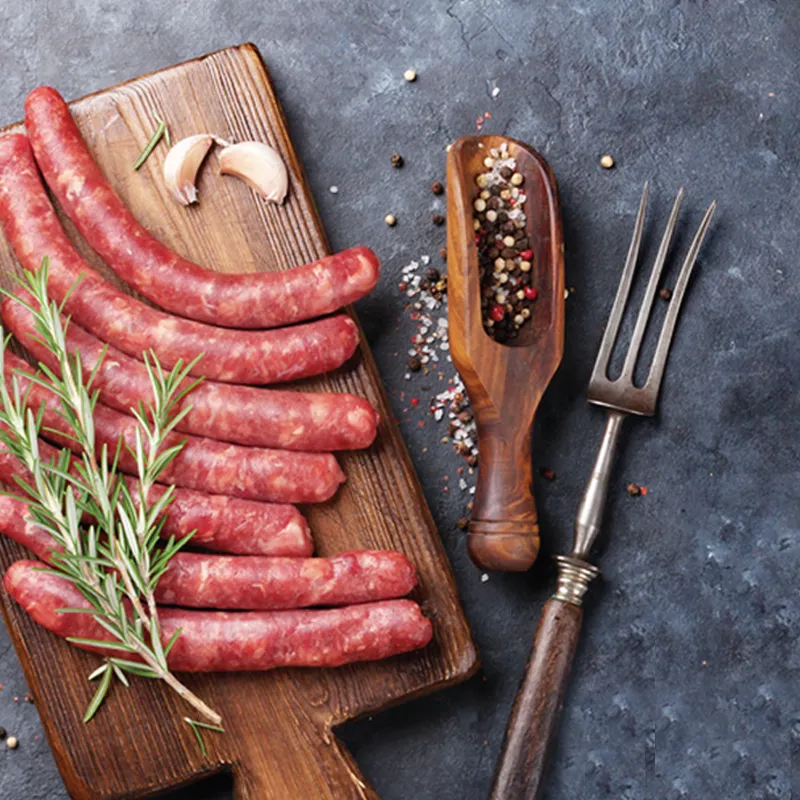How To Cook Linguica? Linguica is a type of sausage that originated in Portugal. It’s made from pork and beef, seasoned with garlic, paprika, cumin and other spices. The name linguica comes from the word “linguiça” which means “little tongue.”
This dish is typically served with sautéed onions, rice and beans, and is a popular choice for barbecues and other gatherings. Follow our steps to cook linguica!
Table of Contents
Linguica Overview
What Is Linguica?
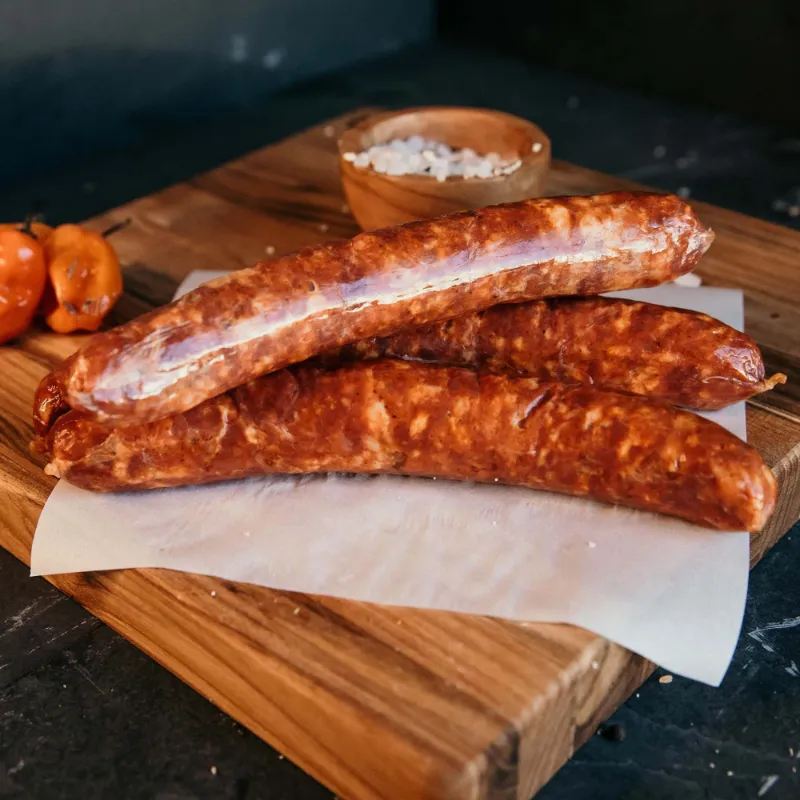
Linguica is a pork sausage that is common in Portugal and Brazil. It is a type of chorizo, which is a type of sausage that is spicy and made with pork, beef, or venison. Linguica is usually smoked, dried, and then cured. It has a reddish color and is usually served sliced.
Linguica is often used in dishes such as stews, casseroles, rice dishes, and beans. It can also be grilled or fried and served as an appetizer or main course. Linguica is a very versatile sausage that can be used in many different ways.
When purchasing linguica, it is important to make sure that it is fresh. Fresh linguica will have a bright red color and should not be too dry. If the sausage is too dry, it may be past its expiration date. Linguica can be found in most supermarkets, but it is also available online.
Linguica is a delicious sausage that can be used in many different dishes. It is important to make sure that the sausage is fresh before using it. Linguica is a versatile sausage that can be grilled, fried, or used in casseroles and stews. Linguica has a spicy, smoky flavor with a touch of sweetness. It is slightly chewy with a fatty texture.
History Of Linguica
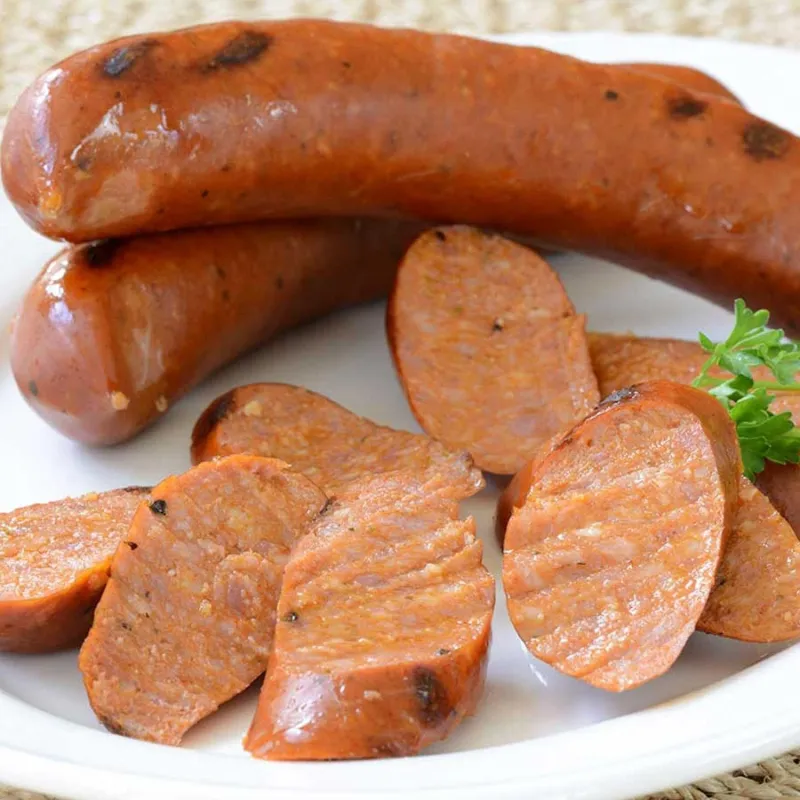
Linguica has a long history in Portugal and the Azores. It is a traditional pork sausage that has been made for centuries. The first recorded mention of linguica was in a 12th century Portuguese text.
In 12th century Portugal, there was a type of sausage called alheira that was made with chicken, pork, or rabbit. This sausage was seasoned with garlic and other spices. It is thought that linguica may have evolved from this sausage.
In 13th century Portugal, there was a type of sausage called chouriço that was made with pork and seasoned with garlic. This sausage is thought to be the ancestor of linguica.
Linguica first came to the Azores in the 15th century. It is thought that Portuguese explorers brought the sausage to the islands. The Azores is an archipelago of nine islands in the North Atlantic Ocean. The Azores are about 1,000 miles (1,600 km) from Portugal.
Linguica is a very popular sausage in the Azores. It is made with pork, garlic, and paprika. It is often used in stews and casseroles. In 16th century Portugal, the first recorded recipe for linguica was published.
In 1849, a Portuguese immigrant named Manuel Araújo de Castro arrived in Hawaii. He is thought to be the first person to bring linguica to Hawaii. In Hawaii, linguica is often used in dishes such as rice and beans, and chili.
Linguica is also popular in Brazil. In Brazil, it is often used in dishes such as pizzas and pastas.
Linguica is very popular in Hawaii. It is used in many dishes including rice and beans, soup, and pizza. In 19th century, Portuguese immigrants brought linguica to Hawaii. It quickly became popular in the local cuisine. Linguica is now a staple of Hawaiian food.
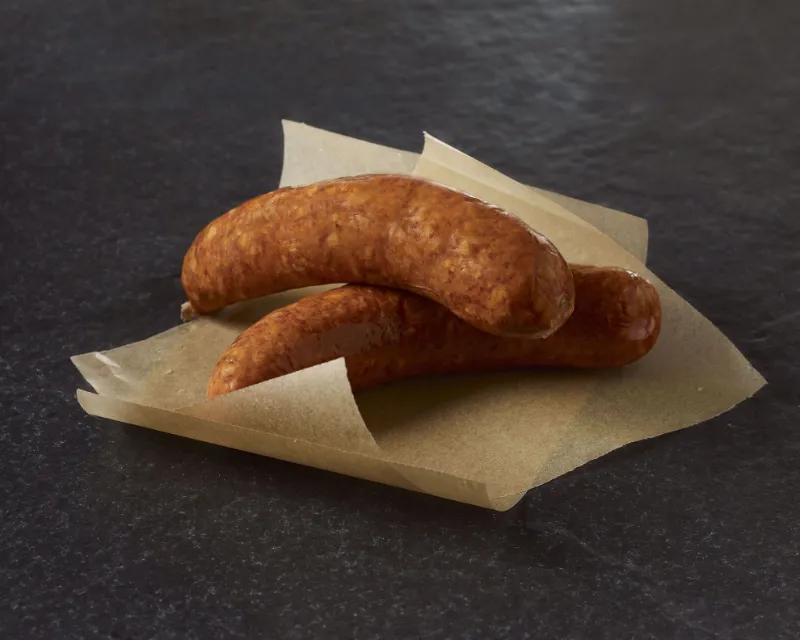
Linguica is also popular in Brazil. Brazilian linguica is made with pork, beef, or chicken. It is often used in stews and soups.
In the United States, linguica is most commonly found in New England and Hawaii. It can be found in Portuguese or Brazilian markets.
Linguica is a pork sausage that is seasoned with garlic and other spices. It has a long history in Portugal and the Azores. Linguica was first mentioned in a 12th century Portuguese text.
Linguica is made from pork, garlic, paprika, and other spices. The sausage is then smoked and cured. It is a traditional sausage of Portugal and the Azores.
Linguica is often eaten with bread, beans, rice, or potatoes. It can also be used in dishes such as caldo verde (a soup made with kale), francesinha (a sandwich made with bread, ham, sausage, and cheese), and Feijoada (a stew made with beans, pork, and sausage).
The sausage is made from pork, garlic, paprika and other spices. It is then smoked and cured. Linguica is a popular ingredient in many Portuguese dishes. It is often used in soups, stews and casseroles.
Linguica is also popular in the Azores. The islands have a long tradition of smoking meats. Linguica is made with pork, garlic, paprika and other spices. It is then smoked over a wood fire.
Linguica is thought to have originated in the town of Lisboa, and it was initially made with only garlic and paprika. Over time, other spices were added to the sausage, and it eventually became the flavorful sausage we know today.

Linguica has a long and rich history dating back centuries. It’s a traditional pork sausage that originated in Portugal and quickly spread to other parts of the world, including the Azores, Hawaii, and Brazil.
Linguica is made with pork, garlic, and paprika and is often used in stews, casseroles, pizzas, pastas, and more. If you’re a fan of sausage, be sure to try linguica the next time you’re in the mood for something new and delicious!
Linguica is a very popular sausage in Portugal and the Azores, and it is often used in traditional dishes. It is also becoming increasingly popular in the United States, as more people discover this delicious sausage.
If you are looking for a delicious and unique sausage, then look no further than linguica. This flavorful sausage will add a touch of Portugal to any dish. Try it in your next stew, soup, or pasta dish. You won’t be disappointed!
What Are The Benefits Of Linguica?
Linguica is a type of sausage which is made out of pork. It is a popular dish in Brazil and is also enjoyed in other parts of the world. Linguica is a high-quality meat product and it has a lot of nutritional benefits. Some of the benefits of eating linguica include:

Good source of protein
The first benefit of eating linguica is that it is a good source of protein. Protein is an essential nutrient for our body and it helps in the growth and repair of tissues. It also helps in the production of enzymes and hormones.
Linguica contains about 12 grams of protein per 100 grams which makes it a good option for people who are looking to increase their protein intake.
Good source of vitamins and minerals
Linguica is also a good source of vitamins and minerals. It contains vitamins such as vitamin B1, vitamin B2, and vitamin B6. It also contains minerals such as phosphorus, potassium, and zinc. These vitamins and minerals are essential for our body and they help in various processes such as metabolism, immune function, and cell growth.
Helps in weight loss
Another benefit of eating linguica is that it can help you lose weight. Linguica is a low-fat meat product and it is also low in calories. This makes it a great option for people who are looking to lose weight.
Additionally, the high protein and vitamin content of linguica can help you feel fuller for longer which can lead to reduced calorie intake and weight loss.
Low in fat and calories
Next benefit of eating linguica is that it is low in fat and calories. As mentioned earlier, linguica is a low-fat meat product and it contains only about 2 grams of fat per 100 grams.
This makes it a great option for people who are trying to watch their fat intake. Additionally, linguica is also low in calories with only about 60 calories per 100 grams. This makes it a great option for people who are trying to watch their calorie intake.

High in flavor
Another benefit of eating linguica is that it is high in flavor. Linguica is seasoned with various spices and herbs which give it a unique and delicious flavor. The sausage is also smoked which further enhances its flavor. This makes it a great option for people who are looking for a flavorful meat product.
Boost energy levels
The next benefit of eating linguica is that it can help boost your energy levels. Linguica is a good source of protein and B-vitamins which are essential for energy production. Additionally, the sausage is also high in iron which is necessary for the transport of oxygen in the blood. This can help to increase your energy levels and improve your overall performance.
Improves heart health
Another benefit of eating linguica is that it can help improve your heart health. Linguica is a good source of omega-3 fatty acids which are beneficial for the heart. Additionally, the sausage is also low in saturated fats and cholesterol which can help to reduce your risk of heart disease.
Improve digestion
The final benefit of eating linguica is that it can help improve your digestion. Linguica is a good source of dietary fiber which is essential for proper digestion. Additionally, the sausage also contains probiotics which are beneficial for gut health. This can help to improve your digestion and keep your digestive system healthy.
How To Cook Linguica?

There are a few different ways that you can cook linguica. One way is to fry it in a pan with some oil until it’s crispy. Another way is to bake it in the oven at a high temperature. You can also grill it or put it in a slow cooker.
Whichever method you choose, make sure to cook the linguica until it’s completely cooked through. You don’t want to undercook it or else it will be tough and chewy. Linguica is best served hot with some bread or rice on the side.
You can also put it in a slow cooker and let it cook all day. Whichever method you choose, make sure to cook the linguica until it’s completely cooked through before eating. When cooking linguica, it’s important to remember that it is a fatty meat. This means that it can easily become overcooked and dry.
To avoid this, be sure to cook it on a lower heat setting and for a shorter amount of time. Additionally, you may want to add some moisture to the pan or oven by adding a little bit of water or stock. This will help to keep the linguica moist and prevent it from drying out.
Once the linguica is cooked, you can enjoy it in a number of different ways. One popular way is to slice it up and put it on a sandwich. It’s also great in pasta dishes, rice dishes, or simply served on its own as an entree. No matter how you choose to enjoy it, cooked linguica is a delicious and flavorful addition to any meal.
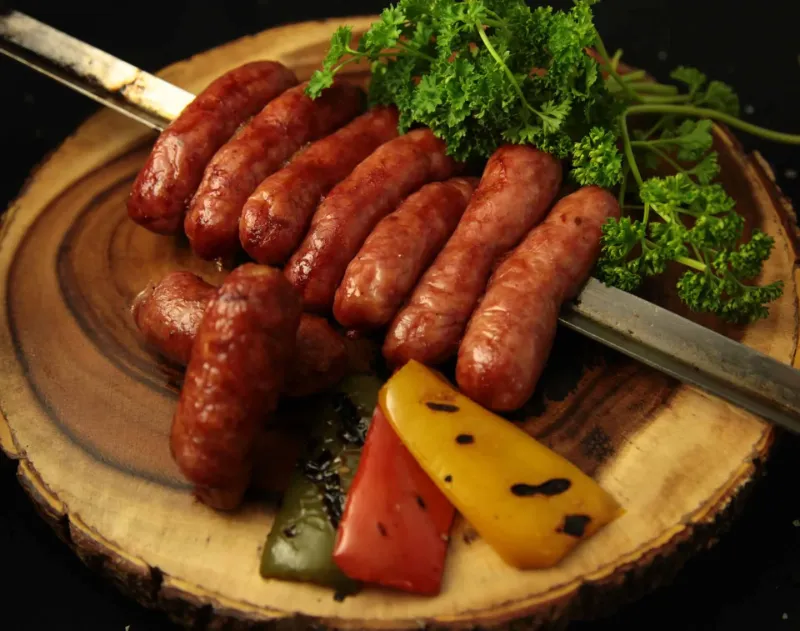
To cook linguica, you will need: linguica, onion, garlic, red pepper flakes, salt, black pepper, and white wine.
Step 1: Cut the linguica into 1/2-inch slices.
Step 2: In a large skillet, sauté the sliced linguica over medium-high heat until it is browned on both sides. Heat a large skillet over medium-high heat. Then, add the linguica and cook until browned on all sides. Next, remove the linguica from the skillet and set aside on a plate.
Step 3: Add the onion, garlic, red pepper flakes, salt, and black pepper to the pan and sauté for another minute. Then, add the red pepper flakes, salt, and black pepper. Stir to combine.
Step 4: Finally, add the white wine and cook for 2-3 minutes. Add the linguica back into the skillet and cook for another 2-3 minutes, or until heated through.
Step 5: Reduce the heat to low and simmer for 10 minutes.
Step 6: Serve with rice or potatoes. Enjoy!
And that’s it! Your linguica is now ready to enjoy. Serve with your favorite sides and enjoy!
7 Tasty Linguica Recipes
Linguica is a type of smoked sausage that is popular in Brazil and Portugal. Here are 10 tasty linguica recipes for you to try:
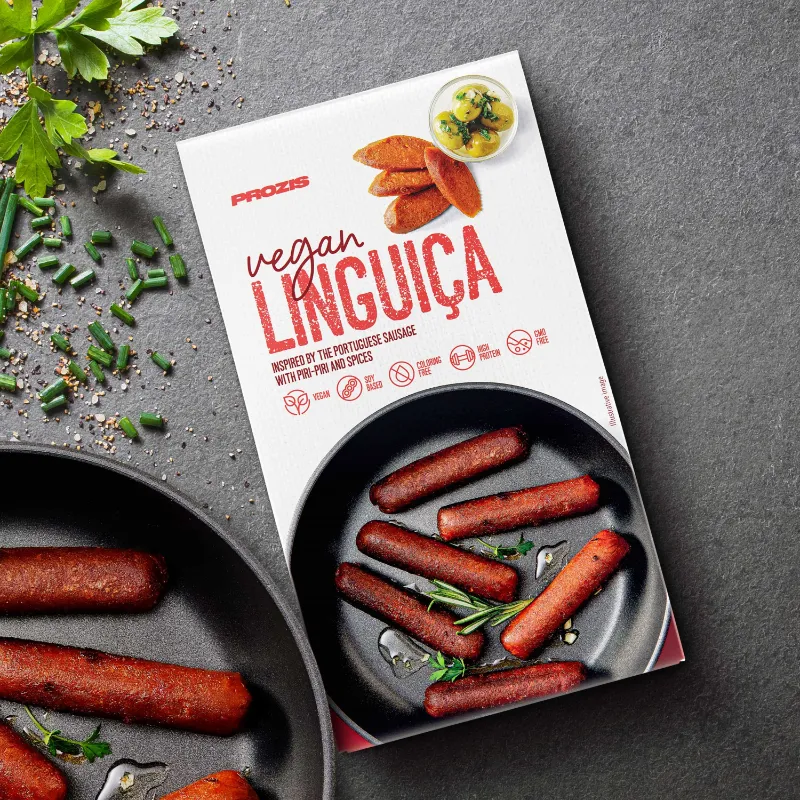
Linguica and Potato Hash
Linguica and Potato Hash is a hearty and filling dish that is perfect for a winter meal. This recipe uses both linguica and chorizo sausage, so it has a lot of flavor. In a large skillet over medium heat, heat the olive oil.
Add the onion and garlic and cook until softened. Add the potatoes, linguica, chorizo, bell peppers, cayenne pepper, salt, and black pepper. Cook for 10 minutes, stirring occasionally. Add the chicken broth and parsley and cook for another 5 minutes.
Linguica Pizza
This recipe for Linguica Pizza is a delicious way to use this flavorful sausage. The sausage is combined with onions, peppers, and olives for a delicious pizza topping. The dough for this pizza is made in a food processor, so it’s easy to make.
In a food processor, combine the flour, salt, sugar, and yeast. Pulse to combine. Add the olive oil and pulse to combine. With the machine running, slowly add the water until the dough comes together.
Turn out the dough onto a floured surface and knead for 5 minutes. Place the dough in a greased bowl, cover, and let rise in a warm place for 30 minutes.
Preheat the oven to 350 degrees F (175 degrees C). Roll out the dough on a floured surface to a 12-inch diameter. Spread the tomato sauce over the dough. Sprinkle with the mozzarella cheese, Parmesan cheese, and oregano. Top with the linguica, onion, bell pepper, and olives.
Bake for 20 to 25 minutes, or until the crust is golden brown.
Linguica and Egg Breakfast Tacos
Start your day with a delicious breakfast taco filled with linguica, eggs, and cheese. This recipe is easy to make and can be tailored to your liking. Add some diced avocado or sour cream to these tacos for an extra special treat.
In a large skillet over medium heat, cook the sausage until browned. Remove from the skillet and set aside. In the same skillet, cook the eggs until firm.
Place 2 tablespoons of the sausage, 1 egg, and 1 tablespoon of cheese on each tortilla. Fold up the tacos and serve.
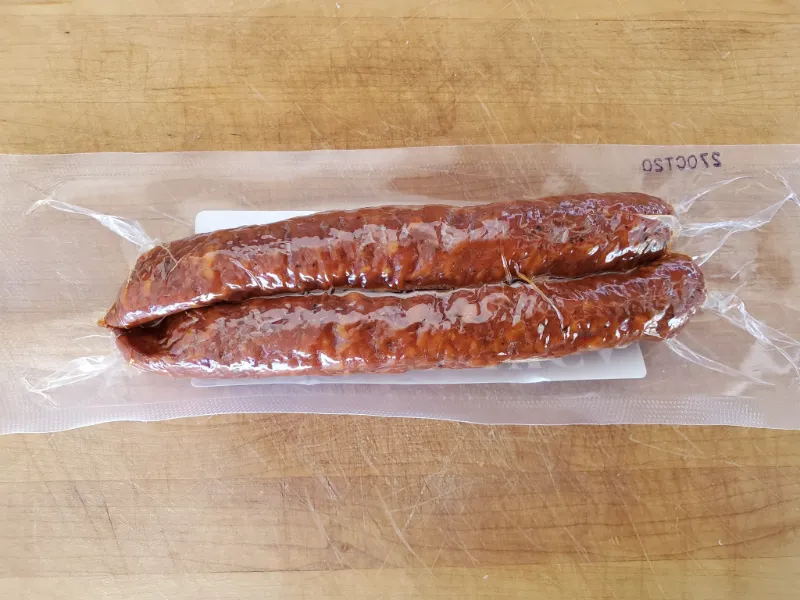
Linguica Sandwich with Peppers and Onions
This sandwich is a delicious way to enjoy linguica for lunch or dinner. The sausage is grilled with peppers and onions and served on a crusty roll with a spicy mayonnaise.
In a large skillet over medium heat, cook the sausage until browned. Remove from the skillet and set aside. In the same skillet, cook the peppers and onions until soft.
Slice the sausage and place it on a crusty roll. Top with the peppers and onions and a spoonful of the mayonnaise. Serve immediately.
Linguica and Rice Stew
This hearty stew is perfect for a cold winter day. It’s packed with sausage, rice, and vegetables, so it will fill you up. And, it’s easy to make in one pot.
In a large pot over medium heat, cook the sausage until browned. Remove from the pot and set aside. In the same pot, cook the rice according to package instructions.
Add the sausage, vegetables, and broth to the pot and stir well. Cover and cook for 10 minutes, or until the vegetables are tender. Serve hot.
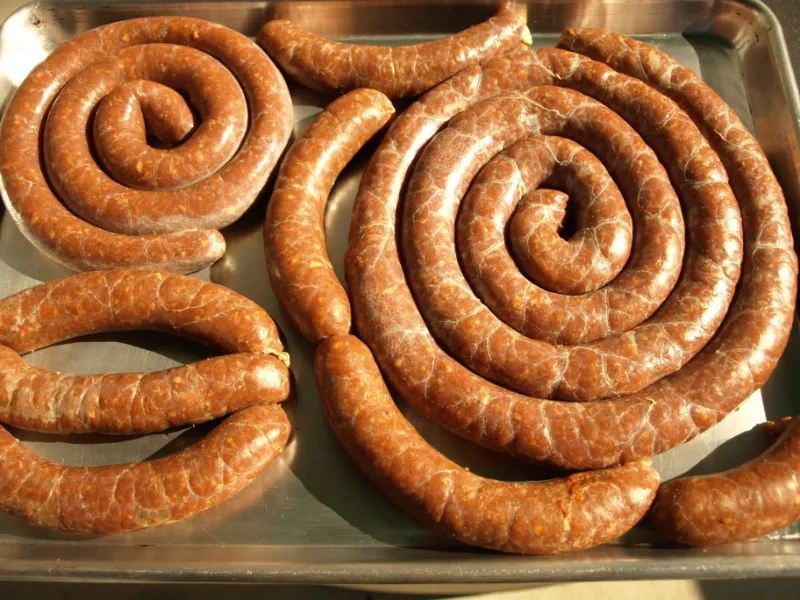
Linguica Chili
This chili is full of flavor and easy to make. It’s perfect for a weeknight dinner or a game day party. Serve it with cornbread or tortilla chips for a complete meal.
In a large pot over medium heat, cook the sausage until browned. Remove from the pot and set aside. In the same pot, cook the ground beef until browned.
Add the sausage, beans, tomatoes, and chili seasoning to the pot and stir well. Cover and cook for 20 minutes, or until the vegetables are tender. Serve hot.
Linguica Soup
This soup is hearty and satisfying. It’s packed with sausage, rice, and vegetables, so it will fill you up. And, it’s easy to make in one pot.
In a large pot over medium heat, cook the sausage until browned. Remove from the pot and set aside. In the same pot, cook the rice according to package instructions.
Add the sausage, vegetables, and broth to the pot and stir well. Cover and cook for 10 minutes, or until the vegetables are tender. Serve hot.
FAQs
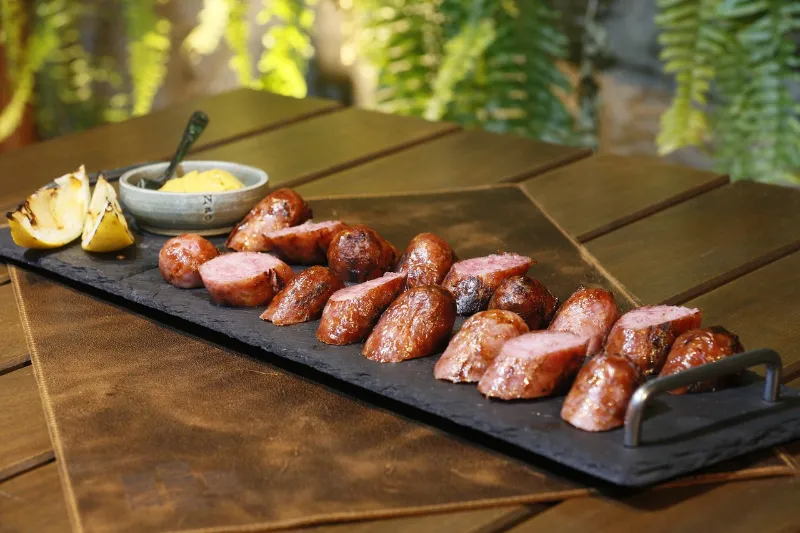
How long should you cook linguica for?
Linguica should be cooked for about 20 minutes. You can cook it for less time if you’re in a hurry, but the sausage won’t be as flavorful. However, if you cook it for too long, the sausage will become dry.
What goes well with linguica?
Linguica pairs well with a variety of foods, including eggs, potatoes, rice, and beans. It can also be added to soups and stews for extra flavor.
Can you freeze linguica?
Yes, you can freeze linguica. If you plan on freezing the sausage, cook it first. Then, wrap it tightly in plastic wrap or aluminum foil. The sausage will last for up to three months in the freezer. You can also freeze uncooked linguica, but it may not be as fresh when you thaw it.
Can you overcook linguica?
Yes, you can overcook linguica. If you cook the sausage for too long, it will become dry. However, you can avoid overcooking by using a meat thermometer to check the internal temperature of the sausage. The sausage is fully cooked when it reaches 160 degrees Fahrenheit.
What is the best way to store linguica after cooking?
The best way to store linguica after cooking is to wrap it tightly in plastic wrap or aluminum foil. The sausage will last for up to three days in the fridge. Alternatively, you can freeze the sausage. If you plan on freezing the sausage, cook it first. Then, wrap it tightly in plastic wrap or aluminum foil. The sausage will last for up to three months in the freezer.
Conclusion
Now that you know how to cook linguica, it’s time to get cooking! This sausage is perfect for breakfast, lunch or dinner. You can eat it on its own, or add it to your favorite dish. Linguica goes well with eggs, rice, potatoes and pasta. So what are you waiting for? Get in the kitchen and start cooking up some delicious linguica!
G Patel has been honing his craft in the restaurant industry for over 25 years. After graduating from North Carolina State University with a degree in business, G set out to turn Eschelon Hospitality into a recognized brand throughout Carolina’s state restaurants; and he did just that when acquiring Mura North Hills. Since then, it has become an iconic sushi-serving establishment.

